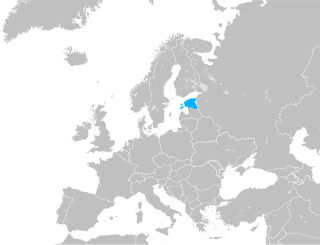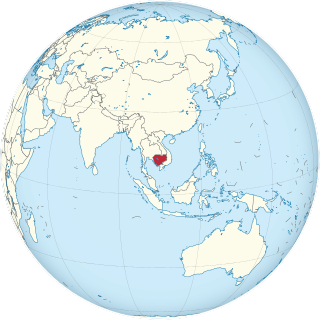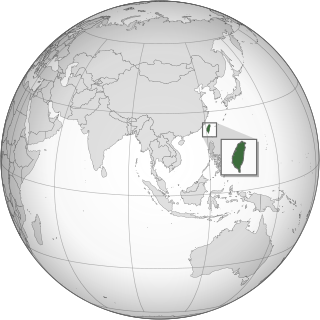
Squatting is the action of occupying an abandoned or unoccupied area of land or a building, usually residential, that the squatter does not own, rent or otherwise have lawful permission to use. The United Nations estimated in 2003 that there were one billion slum residents and squatters globally. Squatting occurs worldwide and tends to occur when people who are poor and homeless find empty buildings or land to occupy for housing. It has a long history, broken down by country below.

Villa Amalia is the name of the building that hosted the former Second High School of Athens in Greece. It is located on the corner of Acharnon and Heiden streets, near Victoria metro station. It was an anarchist squat before its eviction in 2012. It reopened as a school in 2016.

The Poortgebouw is a national monument located at Stieltjesstraat 38 in the Kop van Zuid area of Rotterdam, the Netherlands. It was built beside the River Maas in 1879 and experienced a range of uses until it was squatted October 3, 1980. It had been standing empty for 2 years and was squatted as a protest intended to highlight the lack of affordable residential housing in Rotterdam.

Self-managed social centres in the United Kingdom can be found in squatted, rented, mortgaged and fully owned buildings. These self-managed social centres differ from community centres in that they are self-organised under anti-authoritarian principles and volunteer-run, without any assistance from the state. The largest number have occurred in London from the 1980s onwards, although projects exist in most cities across the UK, linked in a network. Squatted social centres tend to be quickly evicted and therefore some projects deliberately choose a short-term existence, such as A-Spire in Leeds or the Okasional Café in Manchester. Longer term social centres include the 1 in 12 Club in Bradford, the Cowley Club in Brighton and the Sumac Centre in Nottingham, which are co-operatively owned.
The Matilda Centre was a self-managed, grassroots social and community centre based at 111 Matilda Street in Sheffield, South Yorkshire, England. The centre took the name of the street on which the building can still be found. It was housed in the derelict Sydney Works building and collectives ran a variety of projects, including a café, free shop and concert venue. It was evicted in June 2006.

Self-managed social centres in Italy exist in many cities. They are part of different left-wing political networks including anarchist, communist, socialist, and autonomist. The centres tend to be squatted and provide self-organised, self-financing spaces for alternative and noncommercial activities such as concerts, exhibitions, farmers' markets, infoshops, and migrant initiatives. Over time, some but not all projects have opted to legalize their status.

Squatting in England and Wales usually refers to a person who is not the owner, taking possession of land or an empty house. People squat for a variety of reasons which include needing a home, protest, poverty, and recreation. Many squats are residential, some are also opened as social centres. Land may be occupied by New Age travellers or treesitters.

Squat Milada is a First Republic villa located in the Libeň district of Prague. Milada was intended to be demolished in the 1980s and thus deleted from the cadastre, becoming a house which officially did not exist. It became one of the Czech Republic's best known squats, occupied from 1997 until 2009. It was then reoccupied for a day in 2012. Acting as a self-managed social centre and infoshop hosting concerts and events, Milada was also home to a number of people. Despite various plans for the site, as of 2019, the building was standing derelict.
121 Centre was a squatted self-managed social centre in Brixton, south London from 1981 until 1999. As an anarchist social centre, the venue hosted a bookshop, cafe, infoshop, library, meeting space, office space, printing facility, and rehearsal space. Organisations using the space included Food Not Bombs, Anarchist Black Cross prisoner aid chapters, an anarcho-feminist magazine, a squatters aid organisation, and an anarchist queer group. Regular events at 121 Centre included punk concerts, a women's cafe night, and a monthly queer night. The centre kept a low profile and was one of the longest-lasting squats in London.

Klinika was a squatted self-managed social centre in Žižkov, Prague, from 2014 until 2019. It followed in the tradition of anarchist projects such as Ladronka and Milada.

Squatting in the Republic of Ireland is the occupation of unused land or derelict buildings without the permission of the owner. In the 1960s, the Dublin Housing Action Committee highlighted the housing crisis by squatting buildings. From the 1990s onwards there have been occasional political squats such as Grangegorman.

Squatting in the Netherlands is the occupation of unused or derelict buildings or land without the permission of the owner. The modern squatters movement began in the 1960s in the Netherlands. By the 1980s, it had become a powerful anarchist social movement which regularly came into conflict with the state, particularly in Amsterdam with the Vondelstraat and coronation riots.

Ladronka is a homestead at Tomanova 1028/1 in Prague 6, in the Czech Republic. Built by Charles IV, it was bought by an Italian count, then owned by the Sovereign Military Order of Malta before being broken into flats during communism. It was then squatted in 1993, becoming an internationally famous anarchist, self-managed social centre which was evicted in 2000. After several years of renovation, Ladronka was re-opened as an activities centre in 2005, to serve the park it sits within. There are facilities for dining, cycling, rollerskating, beach volleyball and football.

Squatting in Spain refers to the occupation of unused or derelict buildings or land without the permission of the owner. In Francoist Spain migrant workers lived in slums on the periphery of cities. During the Spanish transition to democracy, residential squatting occurred in Spanish cities such as Barcelona, Bilbao, Madrid, Valencia and Zaragoza. From the 1980s onwards a new generation of squatters set up self-managed social centres which hosted events and campaigns. The 1995 Criminal Code among other things criminalised squatting, but failed to stop it. Social centres exist across the country and in Barcelona and Madrid in particular. In the Basque Country they are known as gaztetxes.
BASE is an anarchist community co-operative and self-managed social centre in Bristol, England. Formerly known as Kebele, the building was squatted in 1995.
Squatting in Ukraine is the occupation of unused or derelict buildings or land without the permission of the owner. From the 17th-century onwards, there have been waves of squatting in the Ukraine. In this century, squatting has been practiced by different groups such as artists, anarchists, Ukrainian nationalists, displaced Crimean Tatars returning to the region and refugees created by the annexation of Crimea by the Russian Federation.

Squatting in Estonia is the occupation of unused land or derelict buildings without the permission of the owner. It is a tactic used by different groups including former factory workers, homeless people, artists and anarchists.

Squatting in Cambodia is the occupation of derelict buildings or unused land without the permission of the owner. Following the Khmer Rouge and the Pol Pot regime, the new democratic government introduced land reform. In the capital Phnom Penh, where in 2003 an estimated 25 per cent of the population was squatting, there are informal settlements and occupied buildings.

Squatting in Taiwan is the occupation of unused land or derelict buildings without the permission of the owner. Squatting was fuelled by migrants from China from the 1950s onwards and in addition cities such as Taipei were swelled by internal migrants from the countryside. In order to create Daan Forest Park, 12,000 squatters were evicted. The informal settlement at Treasure Hill has been recognized as cultural heritage.
Chanti Ollin was a self-managed social centre in Mexico City, Mexico, between 2003 and 2017. It was occupied in 2003 by students from the 1999–2000 UNAM strike and participants in Okupa Che. It was a derelict five storey building at Calle Melchor Ocampo 424 in Cuauhtémoc. The name means "house in motion" in the Nahuatl language.


















